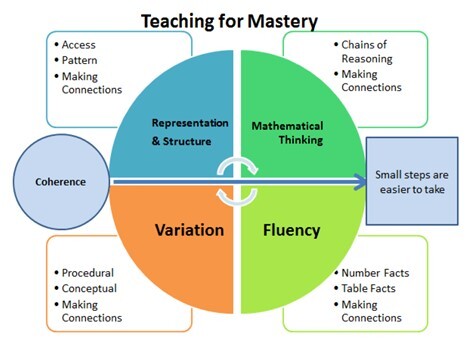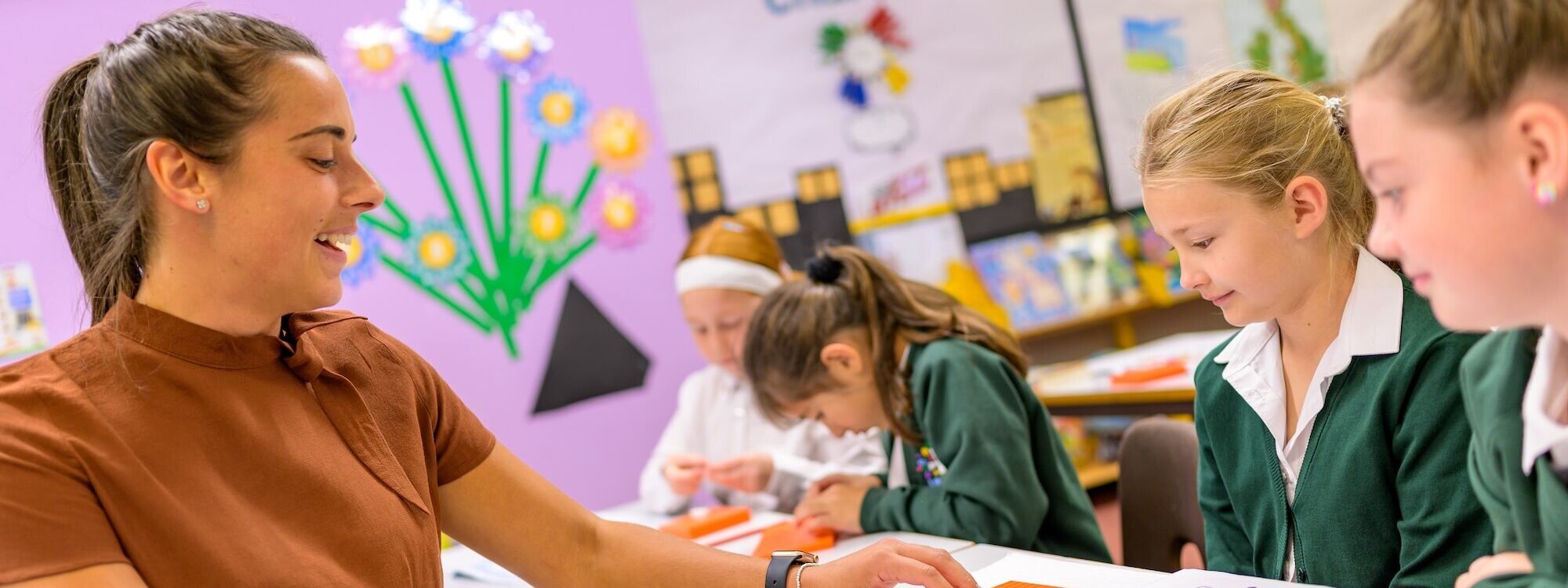Maths
Intent
At Plympton St Mary Infants and Old Priory Junior Academy (St. Mary’s Priory Schools), we believe mathematics is an important part of children’s development throughout school, right from an early age. Mathematics is integral to many aspects of life, we intend for children to develop a positive and enthusiastic attitude towards mathematics that will continue into the next stage of their education. We intend on delivering a curriculum which:
• Allows children to be a part of creative and engaging lessons that give them a range of opportunities to explore mathematics following a mastery curriculum approach.
• Gives each pupil a chance to believe in themselves as mathematicians and develop the power of resilience and perseverance when faced with mathematical challenges.
• Recognises that mathematics underpins much of our daily lives and therefore is of paramount importance in order that children aspire and become successful in the next stages of their learning.
• Engages all children and entitles them to the same quality of teaching and learning opportunities, striving to achieve their potential, as they belong to our school community.
• Makes rich connections across mathematical ideas to develop fluency, mathematical reasoning and competence in solving increasingly sophisticated problems.
• Provides equal opportunities for children to apply their mathematical knowledge to other subjects (cross-curricular links).
• Is in line with the expectations in the National Curriculum 2014.
Implementation
Structure of lesson
● We use pre-teaching prior to lesson for key groups of children.
● Recap previous lesson’s learning and discuss how it might link the days learning objective.
● Share learning objective – crafted from WRM small steps and NCETM Prioritisation steps for precision.
● Use oracy strategies to explore vocabulary together (include on slides & insist on use of correct vocabulary from all, at all times)
● Make links to other topics and explore real life contexts where appropriate.
● Ensure opportunities to learn together – modelled examples, oral rehearsal, ping pong questioning (see key questions below).
● Children are then given opportunities to practise before coming back together for further teacher input.
● When completing WRM end of unit assessment (hot task), children who may need further intervention to secure gaps, have access to the following: keep up, ready to progress, 1:1, retrieval style daily quizzes
We include the following elements, providing challenge and opportunity to develop deep understanding for all children:
● We include images to expose structure/NCETM Prioritisation examples/New WRM problems
● Concrete: include use of physical manipulatives as representations to reveal structure (see calculation policy)
● Pictorial: Through conceptual variation, reveal ‘what it is (standard & non-standard) and what it isn’t (misconceptions)’Address difficult points/misconceptions (WRM – ‘What children may say’) before independent work (eg. ‘Explain why this is wrong’)
● Give children opportunities to practise examples/draw images/rehearse explanations before independent tasks
● Include relevant generalised statements/stem sentences/facts to chant together as a class & support fluency
● Use procedural variation to include numbers/examples which draw attention to certain features
● Link examples to other areas of maths/real life contexts eg. measures, geometry, statistics, time, temperature etc
● Include open-ended tasks allowing all children to go deeper with learning (including to deepen/challenge during input)
● Include screenshots/snips of tasks for modelling
● Live marking and verbal feedback in the lesson is used to assess success or address misconceptions.
Key questions to use in all lessons:
What do you notice?
What stays the same? What changes?
What’s the same? What’s different?
How does this link to the previous representation?
Why is this incorrect? What mistake has been made?
Can you think of a method/example that no one else will think of? And another? And another?
How do you know? Explain.
True or false? Explain why.

Websites/Links
NCTEM Prioritisation materials
White Rose Maths Schemes of Learning
NCETM Mastery Assessment Documents Y1-6
Where we find ‘Learning Opportunities’
● We use WRM/NCETM for bulk of tasks.
● Yoda Challenges in all lessons (to deepen learning and provide further challenge for all):
● Include additional deepening activities within LOs (eg. explain/draw an image/write a story/explain the mistake/give an example or non-example etc) as well as during input/before independent work
Just Know Its
Just know It progression of key/essential mental fluency facts are fed into maths teaching through the year and at the start of lessons. Assessment of facts are done termly through pupil voice.
Impact
• Children demonstrate a quick recall of facts and procedures, including times table facts
• Children show confidence in believing that they will achieve.
• The flexibility and fluidity to move between different contexts and representations of maths.
• The chance to develop the ability to recognise relationships and make connections in maths lessons.
• Mathematical concepts or skills are mastered when a child can show it in multiple ways, using the mathematical language to explain their ideas, and can independently apply the concept to new problems in unfamiliar situations.
• Children show a high level of pride in the presentation and understanding of the work.
